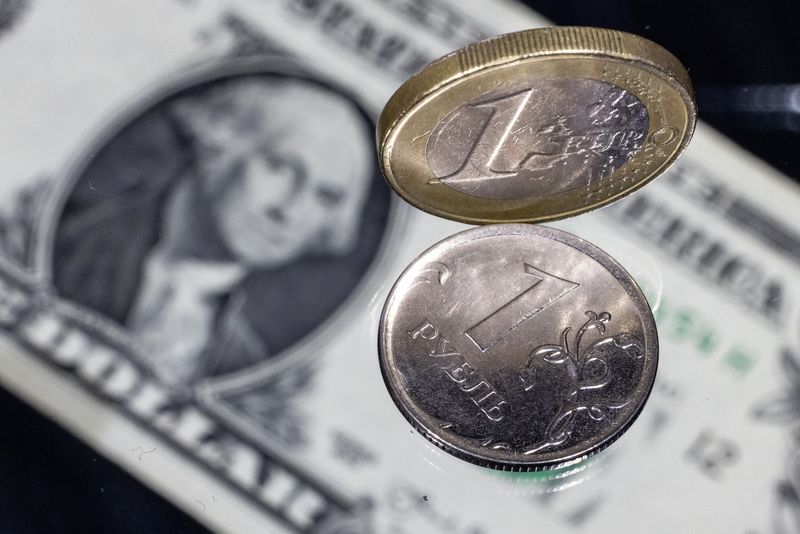(Reuters) -The Russian rouble rallied on the Moscow Exchange on Thursday, crossing the 67 mark against the euro for the first time in nearly five years and heading towards 64 against the dollar, but banks offered to buy roubles at much weaker levels.
The rouble has become the world's best-performing currency http://fingfx.thomsonreuters.com/gfx/rngs/GLOBAL-CURRENCIES-PERFORMANCE/0100301V041/index.html this year with artificial support from capital controls that Russia imposed to shield the financial sector in late February after Moscow sent tens of thousands of troops into Ukraine.
President Vladimir Putin on Thursday cited the rouble rally as an example of Russia's sound performance under unprecedented Western sanctions.
At 1351 GMT, the rouble had gained more than 4% to 64.34 against the dollar, a level last seen in late February 2020.
Against the euro, the rouble had firmed more than 5% to 66.68 , its strongest level since June 2020.
The rouble is driven by export-focused companies that have to convert their foreign currency revenues, while demand for foreign exchange is limited as imports into Russia have waned amid disruption in logistics and sweeping Western sanctions.
But the exchange rate at Russian banks was different.
Russia's largest lender Sberbank offered to sell dollars and euros at 71.24 and 73.89 roubles, respectively. Its state-run rival VTB was selling dollars for 82.15 roubles and euros for 85.15 roubles.
The strong rouble could help tame inflation but also poses risks for incomes of the export-focused economy that is selling its commodities abroad for foreign currency.
In the longer run, the rouble may see some downside pressure mounting from an increase in imports after Russia allowed so-called parallel imports of goods, analysts say.
Last week, Moscow published a list of goods from foreign carmakers, technology companies and consumer brands that the government has included in a "parallel imports" scheme aimed at shielding consumers from business isolation by the West.
Russian stock indexes were mixed. The dollar-denominated RTS index rose 0.4% to 1,128.5 points. Its rouble-based peer MOEX fell 3.5% to 2,302.4 points.
Shares in Russia's second-largest oil producer, Lukoil, fell 4.4% on the day after the company said it will buy Shell (LON:RDSa)'s Russian retail and lubricants businesses.
For Russian equities guide see
For Russian treasury bonds see
